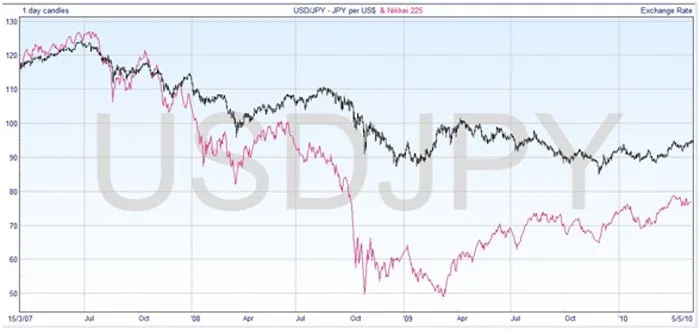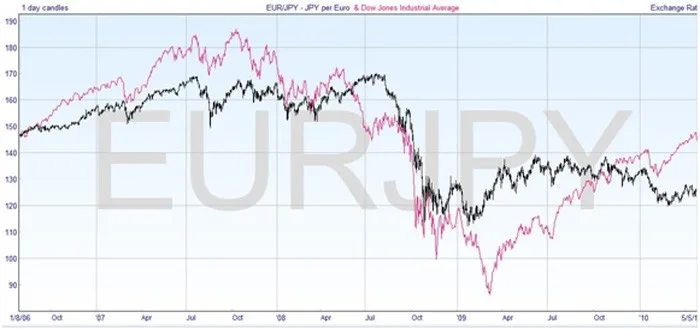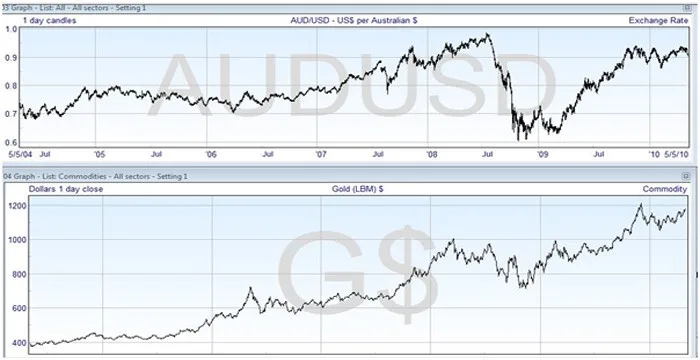In this interconnected world, every market interacts with everything else, so it’s no surprise to know that there are some pointers that you can use when you are trading Forex, and these will start you off in the right direction.
Firstly, the Australian dollar, Canadian dollar and the New Zealand dollar are all regarded as ‘commodity currencies’. If commodities are strong, then these currencies also tend to be strong. This is in contrast to the ‘savings currencies’ of the euro, the Swiss franc and the British Pound, which tend to follow the strength of savings.
The Yen
If you’ve ever looked at trading Japanese stocks, you’re probably familiar with the Nikkei 225 Japanese stock index. The index is full of exporters like Canon, Sony, Toyota, and many others. This means that the exporters do their best business when the Yen is falling and their goods are cheaper for overseas buyers, particularly those in the US.
Logically, this means that the Nikkei 225 index is strong when the Yen is weak, and when the Yen goes up you will find the Nikkei going down. You can observe this in the charts of the Nikkei 225 and the USD/JPY which track each other very closely. This is because when the USD/JPY goes down, the dollar is falling in value in relation to the Yen, which means the Yen is relatively going up.
Here’s a chart of the USD/JPY in black, and the Nikkei index in red. You can see how closely the peaks and troughs correspond — the Nikkei slumped rather more than the currency moved during the recent financial crisis, but usually tracks very closely.
Here’s another relationship that you may find puzzling at first sight —
Here is the EUR/JPY plotted against the Dow Jones Industrial Average. Again, there’s some deviation given the recent financial crisis, when the stock index dropped dramatically but of course the currency exchange rates didn’t completely crash. Notice however that the majority of the peaks and troughs still correspond, and in normal market conditions they follow fairly closely.
You may be wondering why this would be. It’s because the companies that make up the Dow draw more than 50% of their income from overseas customers. When the dollar falls, these companies show increased profits as the foreign currency is worth more dollars, which makes it look as though the companies are earning more and makes the Dow go up. A rising stock market causes the Yen to fall against the euro, sending up the EUR/JPY pair as the Dow rises.
Australian Dollar
Another of the intermarket relationships is the Australian dollar and gold. These also tend to track each other, as you can see below.




